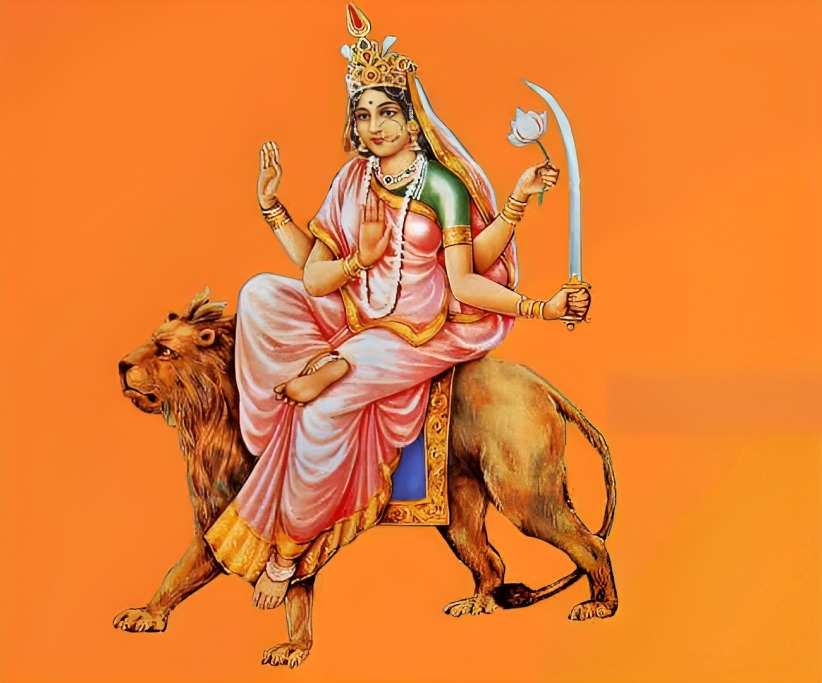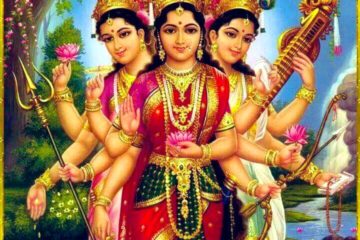Navaratri, a nine-night Hindu festival, is a time of devotion, prayer, and celebration. Each day of Navaratri is dedicated to a different manifestation of the goddess Durga. On the sixth day, we worship Goddess Katyayani, a powerful deity symbolizing courage and valor. In this blog post, we will explore the significance of Navaratri Day 6 and the joyful celebrations associated with it. On this day, we remember the strength and courage of Goddess Katyayani and take the time to honor her with festivities and prayer.
Significance of Day 6:
- Goddess Katyayani is considered to be the sixth form of Goddess Durga. She is named after the great sage Katyayana, who performed intense penance to summon her divine presence. Katyayani is portrayed with four hands, holding a sword, lotus, and two other weapons, symbolizing her fierce and protective nature.
- She is often associated with the planet Jupiter, which represents knowledge, wisdom, and spirituality. Worshiping Goddess Katyayani is believed to impart strength, courage, and the ability to overcome obstacles.
The Legend:
The story of Goddess Katyayani’s origin is intriguing and inspiring. According to Hindu mythology, she was born to the sage Katyayana as an avatar of Durga to slay the demon Mahishasura. The demon was blessed with invincibility by Lord Brahma but misused his powers to wreak havoc on Earth. In response, Goddess Katyayani engaged in a fierce battle with Mahishasura, ultimately defeating him and restoring peace to the world.
Celebrations on Navaratri Day 6:
- Color and attire: On the sixth day of Navaratri, devotees often wear red, the color associated with Goddess Katyayani, as a mark of their devotion. Red is believed to symbolize strength and power.
- Morning Prayers: The day starts with special prayers and offerings to Goddess Katyayani. Devotees sing hymns and chant mantras dedicated to her to seek her blessings.
- Fasting: Many people choose to fast on this day, consuming only fruits and milk. Fasting is a way to purify the body and mind and to show dedication to the goddess.
- Cultural Performances: Navaratri is not just a religious festival but also a celebration of culture and art. Dance performances, especially the Garba and Dandiya Raas, are popular during this time. These traditional dances are a way to express joy and devotion.
- Decorations: Homes and temples are adorned with vibrant flowers, rangoli (colorful patterns made with colored powder), and diyas (oil lamps) to create a festive atmosphere.
- Offerings: Devotees offer fruits, sweets, and other delicacies to the goddess as a symbol of their devotion. These offerings are later distributed among the community as prasad (blessed food).
Conclusion:
On the 6th day of Navaratri, we celebrate the powerful and courageous Goddess Katyayani. Her story serves as a reminder that no matter how impossible the challenge, goodness and righteousness will always emerge victorious over evil. As we pay our respects to her on this day, let us also draw inspiration from her strength and determination to face our own battles with unwavering faith. Amidst the colorful festivities, it is crucial to remember the profound significance of Navaratri—the triumph of light over darkness, knowledge over ignorance, and good over evil. May the blessings of Goddess Katyayani instill in us the courage and valor to lead a life of righteousness and stand up against all forms of wickedness.




